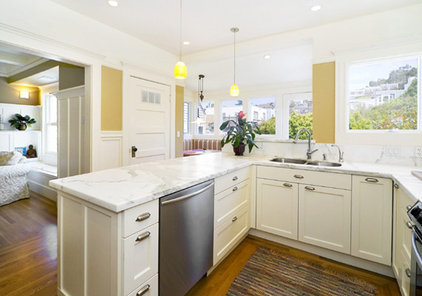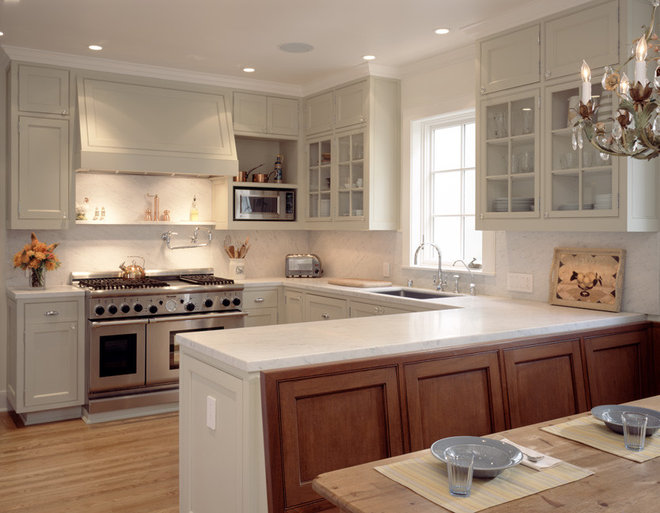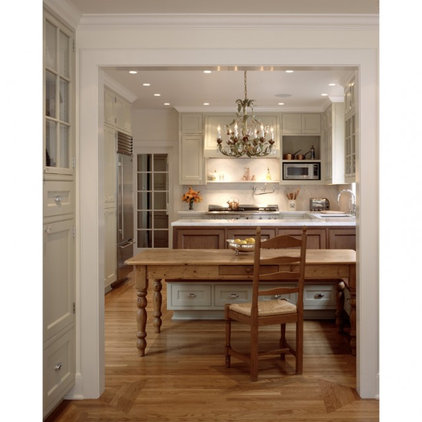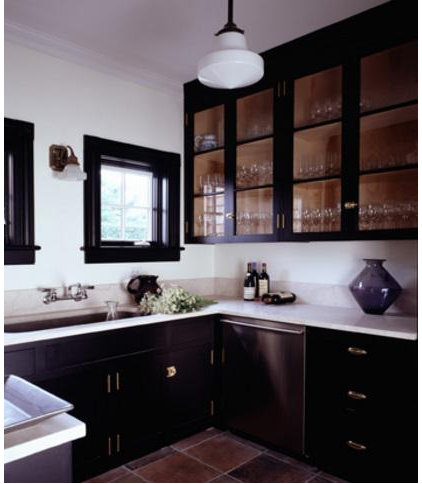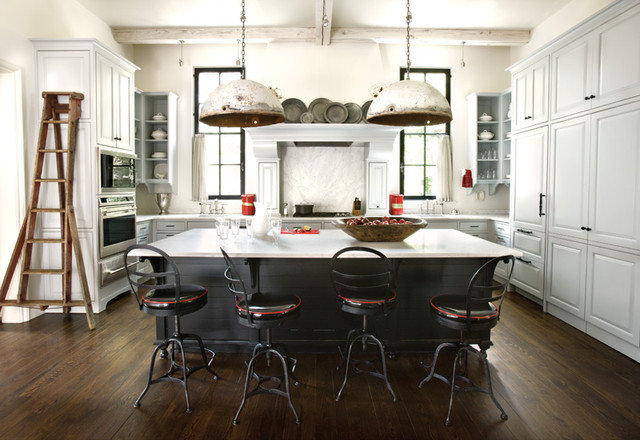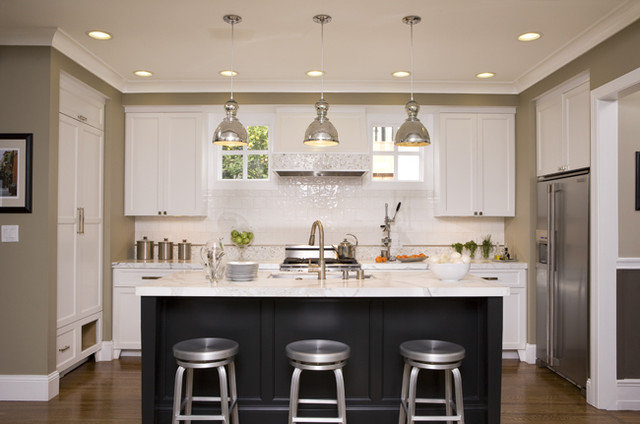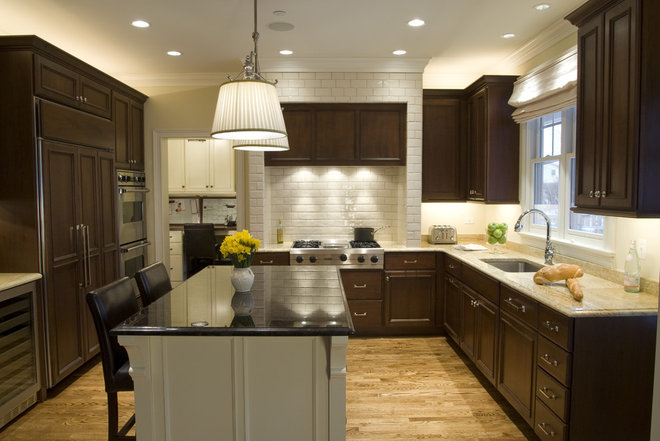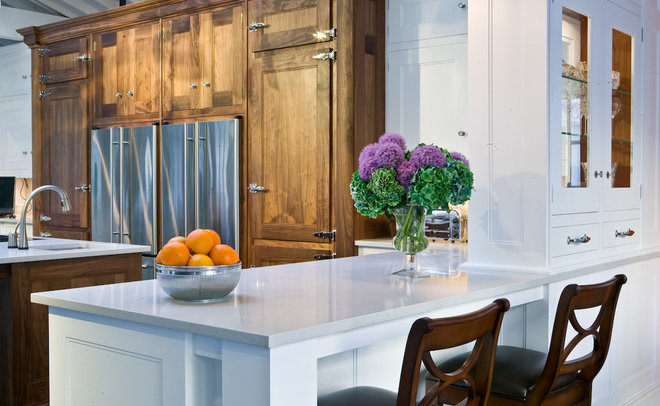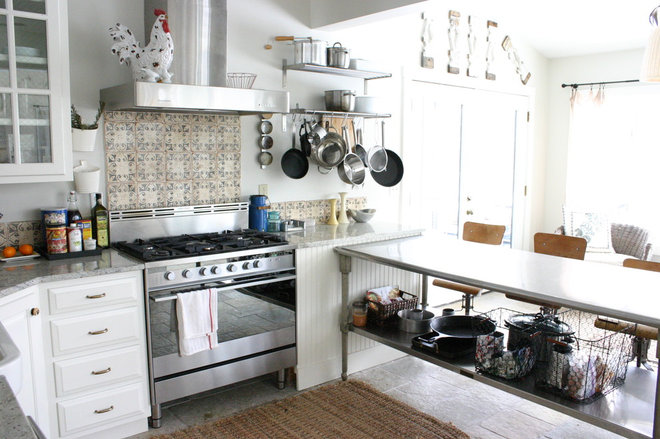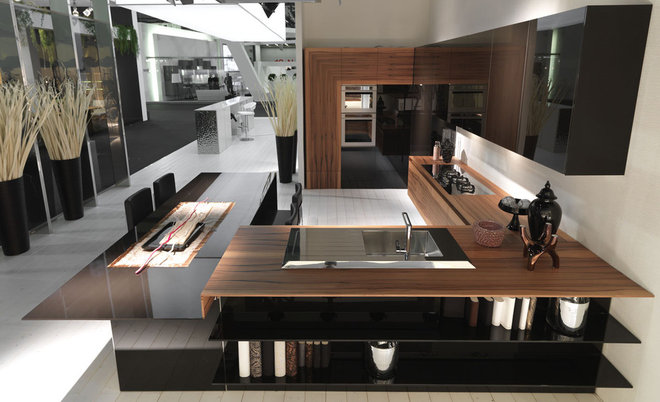OK, we don't mean to brag...but what can you say? When you're good, you're good.
We are pretty proud of ourselves over here at KC. Our remodeling process is working like a well-oiled machine. We have streamlined our remodels and you can be confident in our work.
A lot of people worry that it is going to be chaotic and unpredictable but not with us. We have heard the horror stories of some places that will remain nameless. We are not them.
It's so simple it's scary actually.
Dream.
Decide it's time.
Call us.
Come in.
Look at our displays.
Tell us your dream.
We come out to your house.
You make us breakfast.
Just kidding!
We measure.
We create a 3-D design.
You say "yes I love it!"
We order your selections.
We keep you informed.
We schedule a time to start.
Two weeks and no stress later-
YOUR REMODEL IS DONE
and that's how dreams are made!
Welcome to KITCHEN CONCEPTS BLOG! We are located in Hadley, MA, on beautiful Rte. 9! We are a full service kitchen and bath remodeling center, for both residential homes and commercial locations! We are a "one stop shop" - leave the general contracting to us! We can't wait to meet you! Stop by and say hello!
Friday, December 5, 2014
Sunday, July 20, 2014
Kitchen Layouts: Ideas for U-Shaped Kitchens
Kitchen Layouts: Ideas for U-Shaped Kitchens
U-shaped kitchens are great for cooks and guests. Is this one for you?
The U-shaped kitchen lends itself to high-efficiency cooking: You can often pivot on one toe as you spin around from refrigerator to sink to stove. A good friend and accomplished cook swears by this kitchen layout. He loves it because it keeps people out of the way when he's cooking. Guests can hang out as long as they stay on "that" side of the peninsula! The U-shaped kitchen (also called the C-shaped kitchen) is the perfect expression of the work triangle we hear so much about in kitchen design. As you can see from the selections below, U-shaped kitchens can still come in different shapes and sizes:
Older homes with smaller kitchens sometimes have the refrigerator inside the "U," but that really eats into the counter space. Most often you'll see a U-shaped kitchen with the refrigerator on the adjacent wall right outside the "U," which is fine. It's still within the work triangle.
One signature of the U-shaped kitchen is the peninsula. In this case, it doesn't have seating due to the passageway between rooms. The lack of kitchen seating is often the reason people prefer the L-shaped kitchen with an island to the U-shaped kitchen.
As you can see, the dishwasher is in the peninsula and not next to the sink. That's due to a lack of room, unless you choose to not center the sink. This is one complaint about the U-shaped kitchen. One solution would be to put the sink in the peninsula, but that would leave a long empty counter on the short section of the U. At least here a cook can use the peninsula for prepping and serving.
One signature of the U-shaped kitchen is the peninsula. In this case, it doesn't have seating due to the passageway between rooms. The lack of kitchen seating is often the reason people prefer the L-shaped kitchen with an island to the U-shaped kitchen.
As you can see, the dishwasher is in the peninsula and not next to the sink. That's due to a lack of room, unless you choose to not center the sink. This is one complaint about the U-shaped kitchen. One solution would be to put the sink in the peninsula, but that would leave a long empty counter on the short section of the U. At least here a cook can use the peninsula for prepping and serving.
Here's one solution to that aforementioned seating problem in U-shaped kitchens: This terrific bench seating allows for that coveted kitchen table. On the minus side, there no casual counter seating.
Here's another view of the previous kitchen. Now you can see the location of the refrigerator: This is where it most often resides in a U-shaped kitchen. Too many times people are tempted to put in both a kitchen table and counter stools at the peninsula. What you end up with is cramped space with too many chairs bumping into each other. If you don't have the room, resist the temptation to do this, it will drive you mad!
In this U-shaped kitchen it appears that the refrigerator and stove are outside the "U," so there might be a few extra steps between the stove and sink.
Tip: If that's the case, a prep sink by the stove is a great solution — if you're willing to sacrifice a base cabinet. Sometimes in smaller and older homes, you just don't have a choice without moving walls and incurring major construction costs. Make the most of what you have!
Tip: If that's the case, a prep sink by the stove is a great solution — if you're willing to sacrifice a base cabinet. Sometimes in smaller and older homes, you just don't have a choice without moving walls and incurring major construction costs. Make the most of what you have!
A larger U-shaped kitchen with room for an island can be dreamy, but the one downside of this layout is the island doesn't have any seating.
Tip: It might be possible to fit in two stools at the short end of the island by sacrificing one cabinet or extending the overhang. Keeping the legs, however, will allow you to keep the furniture-style look for your island.
Tip: It might be possible to fit in two stools at the short end of the island by sacrificing one cabinet or extending the overhang. Keeping the legs, however, will allow you to keep the furniture-style look for your island.
Here's the solution if you have the space: a perfect U with an island and seating for 4! If I'm not mistaken I see two sinks, one in front of each window. That's a great alternative to the island prep sink.
Because the refrigerator and pantry are recessed into the walls, this U-shaped kitchen almost looks like a galley kitchen with an island.
This could either be seen as a broken U or an L-shaped kitchen with an island. Technically I'd say it leans towards the latter, but if you imagine that door on the left being cabinetry, you can use this layout for inspiration for your own U-shaped kitchen.
Double-dreamy: a U-shaped kitchen with an island and a peninsula! I'm taking a little creative liberty here again since I'm not sure where the stove is. But this looks like a great way to for your guests to be in the kitchen and out of the way at the same time.
You can also create a U-shaped kitchen by adding a freestanding island to an L-shaped kitchen. In this case, the one end cabinet was turned to face away from the kitchen, and a beadboard end panel was added to allow for a place to intersect the open island. Because the island is open, you have knee space for stools and seating without needing an overhang.
A sleek and modern U-shaped kitchen with a creative twist: The peninsula is part island/part kitchen table.
Sunday, June 8, 2014
The Perfect Kitchen for Entertaining and Every Day Use

The open kitchen is more popular than ever—but with a twist. It’s now designed to accommodate parties, homework, and even multiple cooks. And many electronic devices are finding a new home in the kitchen. Read our essential steps to creating a truly social kitchen, along with our advice for hiring professionals, planning the budget, and sidestepping those trends that haven’t stood the test of time.
1. Open up the space—with care (shown above). Be judicious about how many barriers you eliminate. “Too many pathways moving through the space will lead to chaos,” says Sharon Olsen, a certified kitchen designer in Portland, Ore. Using half-walls or arched openings can create a sense of openness while maintaining traffic flow.
It's also important to visually integrate the kitchen with the rest of the home. “The latest iteration of the open kitchen sees it as an ‘interior design’ feature within a larger living/dining space,” says Erica Broberg Smith, an architect based in East Hampton, N.Y. Color can be a great connector. Repeat a hue from the living room in your choice of artwork on the kitchen walls, for example, or the color of your countertop appliances.

Shown counterclockwise, above:
2. Create activity areas. Establishing zones will help organize the space, especially in multicook kitchens. The layout should steer children away from the main work triangle, formed by the refrigerator, range, and dishwasher and sink.
Put a beverage and snack station toward the public-facing edge of the kitchen. That helps keep kids—and guests—away from the hot stove and sharp knives. The station might take the shape of a wet bar, with a wine chiller and sink. Or the emphasis could be on coffee and snacks, with a coffeemaker, a cabinet for cups and mugs, and a refrigerator drawer for milk and juice boxes.
If you love to bake, add a baking station. Unlike the other zones, this one should be near the oven, with room for baking supplies and equipment, and a marble countertop for rolling out dough.
3. Contain the mess. Some homeowners resist an open kitchen because they don’t want guests staring at messy pots and pans. But there are ways around the dilemma. In the kitchen featured here, a peripheral cleanup zone, with sink, dishwasher, and expansive landing area for dirty dishes, helps keep the mess off to the side during dinner parties; a second island prep sink serves the main work triangle. Another strategy is to add a raised bar to the “public” side of a kitchen island. That will give guests a place to perch during meal prep, then homeowners can hide the mess from view once dinner is under way. An island bar also provides seating during casual meals.
Put a beverage and snack station toward the public-facing edge of the kitchen. That helps keep kids—and guests—away from the hot stove and sharp knives. The station might take the shape of a wet bar, with a wine chiller and sink. Or the emphasis could be on coffee and snacks, with a coffeemaker, a cabinet for cups and mugs, and a refrigerator drawer for milk and juice boxes.
If you love to bake, add a baking station. Unlike the other zones, this one should be near the oven, with room for baking supplies and equipment, and a marble countertop for rolling out dough.
3. Contain the mess. Some homeowners resist an open kitchen because they don’t want guests staring at messy pots and pans. But there are ways around the dilemma. In the kitchen featured here, a peripheral cleanup zone, with sink, dishwasher, and expansive landing area for dirty dishes, helps keep the mess off to the side during dinner parties; a second island prep sink serves the main work triangle. Another strategy is to add a raised bar to the “public” side of a kitchen island. That will give guests a place to perch during meal prep, then homeowners can hide the mess from view once dinner is under way. An island bar also provides seating during casual meals.
4. Create a drop zone. When the kitchen is the nucleus of the home, it can become a dumping ground for papers, bags, jackets, and the like. A well-appointed “drop zone,” usually located just off the kitchen, will provide a place for those items so that they won’t enter the kitchen in the first place. If space permits, consider a full-sized mudroom with a durable flooring material, such as stone or ceramic; open shelves with baskets assigned to each family member; and plenty of hooks. A hallway closet can also be converted into a functional drop zone, especially in smaller households.

Shown left to right, above:
5. Bring back the eat-in kitchen. Casual dining is integral to the social kitchen, and it’s good for resale value too. In fact, the eat-in kitchen was among the most desired features in a 2013 survey of homebuyers by the National Association of Realtors. Built-in banquettes are making a comeback. “Children love them, and they are great for cozy informal dining,” says Broberg. They’re also a place to pay the bills and do the homework (or at least see that it gets done). And the base of a banquette can provide additional storage space for napkins, tablecloths, and other accessories.
Add an island. This central counter will give people a place to sit while you’re preparing the meal. Just don’t let it clog traffic. There should be 42 to 48 inches of clearance on all sides.
When entertaining, an island can function as an interactive buffet. “Food has gone from something you serve at a party to something you do at a party,” says Steven Raichlen, author of “Man Made Meals: The Essential Cookbook for Guys.” Mindy Weiss, a party planner based in Los Angeles, likes to arrange salad bars, panini stations, and other dishes on the island that bring guests into the food-prep experience. Another crowd pleaser: Fill an island prep sink with ice and use it for a raw bar or a place to serve chilled drinks.
Add an island. This central counter will give people a place to sit while you’re preparing the meal. Just don’t let it clog traffic. There should be 42 to 48 inches of clearance on all sides.
When entertaining, an island can function as an interactive buffet. “Food has gone from something you serve at a party to something you do at a party,” says Steven Raichlen, author of “Man Made Meals: The Essential Cookbook for Guys.” Mindy Weiss, a party planner based in Los Angeles, likes to arrange salad bars, panini stations, and other dishes on the island that bring guests into the food-prep experience. Another crowd pleaser: Fill an island prep sink with ice and use it for a raw bar or a place to serve chilled drinks.
6. Build in charging stations. For many people the kitchen is where their electronic devices live. Charging stations can be tucked into a cabinet or drawer that’s fitted with docks and electrical outlets. If you need to charge only a couple of devices, Leviton and other manufacturers make electrical outlets with built-in USB ports that can be installed in a kitchen backsplash, letting you power your smart phone while running the blender or stand mixer.
Other measures to consider
Let your devices talk to each other. In the last year Dacor and GE have introduced wall ovens and ranges that you can control and monitor from your smart phone, for example preheating the oven from the backyard or checking the status of a roast chicken while you’re doing laundry. “In that sense technology is actually freeing up the cook from being in the kitchen,” says Shelia Schmitz, editor of Houzz.com, a home design website. Given how much time we’re spending in today’s social kitchen, an occasional break might be a good thing.
Pay attention to acoustics. The drawback to open kitchens is noise. “With the hardwood floors and stone countertops that everyone wants, it can sound like a restaurant on Saturday night,” Olsen says. Soft layers, such as an area rug in the adjacent room, will help absorb the sound. Also pay attention to the appliances. A dishwasher that scores an excellent for noise will be less distracting than one that’s average or worse. And many wall ovens have a cooling fan that runs for a few minutes after the unit is turned off, a gripe with some consumers.
Sunday, May 4, 2014
The Spring is Getting Greener!
We have a great special on Silestone for May!
Silestone is a great product and is Leed Certified as well< take a look below at all the green reasons to choose Silestone:
Saturday, April 19, 2014
Thinking Spring!
Well, spring is officially here and it's starting to really warm up, finally! Spring and summer are a great time to start a kitchen renovation so that you can comfortably make use of your grill when your kitchen is out of commission.
We recently had a client request a very modern kitchen design and I thought it would be great to show you some unusual and creative kitchens to get some of you thinking outside the box and maybe inspire you for your remodel!
Here's a bright and cheery modern kitchen with some really homey and warm design elements to soften the modern cabinets. Open shelving on the wall and contrasting lime and turquoise make this a fun and family friendly space. I can picture a large family gathered around this large island making cookies and happy memories! Even if sleek modern cabinets are not to your taste, try incorporating some unusual color combos to liven up your space. Paint is an inexpensive and easily changeable way to add some interest.
This kitchen shows off the trend of mixing wood lower cabinets with white painted uppers. Lower cabinets get much more abuse than uppers so sticking with a darker finish is a good option for high traffic kitchens while the painted uppers bring light into the space and make it feel more open. I also love the touch of stone in the backsplash with the square tiles set on a diagonal.
Here is a lovely option for those of you with small cottages you may be utilizing this summer. A simple stretch of counter with open shelving above makes this small space look and feel a bit more open. I also love the unusual choice of a light mint green on the lower cabinets. This is a kitchen I would want to keep fresh cut flowers in every day!
This kitchen is a nice mix of traditional and modern with its shaker cabinets in clean, symmetrical lines. The row of upper cabinets with similar door widths will satisfy those with modern tastes but the warm wood tones give it a soft, homey feeling. I love how the homeowner has used rustic baskets for extra storage above the cabinets and old fashioned cracker jars for the island lighting.
So when it's time for your remodel, don't be afraid to try something new; a bold color, mixed cabinet colors, or unusual finishes or fixtures. All these aspects help make your kitchen your own personal space that you will love for years to come!
Sunday, April 6, 2014
When to Pick Fixtures and Finishes
Many homeowners think designing a kitchen starts with picking items like appliances, flooring, cabinet finishes, countertops, faucets and lighting ... and to a point it does. But I try to keep my clients from worrying about many of these items until after the space planning is complete. The huge number of options can be distracting, and it can be overwhelming for most homeowners to make all these decisions at once. You may think you want a cooktop and separate double oven, but it may not be the best appliance package for the design, and at some point you'll be faced with that decision. Getting overcommitted too early on can stifle creativity and hinder your progress in getting the best kitchen design for your home.
For some, choosing kitchen fixtures and finishes is like being a kid in a candy store. They like everything and can't stay focused on what's right for the overall aesthetic or design. For others, it's paralyzing. They get so worried about picking the wrong finish or fixture that they have trouble making decisions or focusing on other important aspects of the job at hand.
Even though we always start a kitchen remodel with inspiration photos to get an overall idea of what the client wants the kitchen to look like, I often shelve most of those until after the preliminary plans are complete.
I view kitchen remodels as a series of small, layered choices. Here are some ideas for how and when to make them after space planning is complete.
1. Appliances, Sinks and Lighting
I recommend that clients select appliances and sinks during the preliminary design phase, which often comes before selecting the rest of the finishes and fixtures. This is so the plans can reflect the proper sizes, which will in turn affect the cabinetry layout.
Also, I recommend picking the type and amount of lighting fixtures during this phase: cans, semi-flush mounts, how many pendants over the island and so on, in order to complete the lighting plans so the contractor to provide estimates. Most people haven't actually picked what style pendant light yet, but at least the decision about number is done.
It's also time to decide whether or not you want a prep sink in addition to your main sink. At this point, by the way, it's fine if you decide to change from a 36-inch range to a cooktop and wall oven.
By the time you get to final construction documents or order cabinets, however, these decisions must be finalized. The nice thing is that there are now a few big decisions that you can check off your list.
As you can see from the first photo here, the decision on how many pendants to use affects how many junction boxes you need on the ceiling — and that decision needs to be made before plans get approved for permits and before the contractor closes up the drywall after rough electrical is done.
This is why the professional you hired may focus you on figuring out the lighting plan before picking out the countertops.
You might have selected your appliances earlier in the design phase, in terms of manufacturer, model number and size, but remember that stainless isn't the only option. Some companies offer a vintage finish like this black with brass accents, while others offer a wide array of enameled colors. Choices like this can determine the look and feel of your kitchen in one sweeping gesture. Other finish selections to be noted here are the glazed tile backsplash, the open shelves, upper glass insert cabinets, the finish of the tile floor and the freestanding island.
2. Cabinets, Countertops and Tile
Depending on what type of professional you hired, or if you are doing your own kitchen, you may start the finishes and fixture selection process from a different jumping-off point.
Rather than picking the cabinet wood species and finish color by itself, and then picking countertops and tile, I like to have my clients work on an overall palette of materials at the same time. Layer the materials and create collages of patterns, textures and colors to see what works best together.
Sure, a client might have the idea that they want a "white kitchen," meaning white cabinets, but there are many "whites" out there, and what you mix them with really makes a huge impact on what the overall kitchen will look like.
Each small decision is layered to achieve what the final look of the kitchen will be. In this kitchen, an antique glazed finish versus pure white cabinets, terra-cotta 2-inch tile versus subway tile, and glass-front cabinets give this kitchen its unique fingerprint.
For the modernists out there, you would think picking finishes and fixtures would be easier, with less adornment and fewer decisions to make. For some this might be true, but I find that for others this style can be just as challenging. It's all about restraint and editing, and that's hard.
The layering and mixing of finishes in this kitchen give it an old-world charm. Note the two tones wood finishes and their relationship to the tile and countertop. The choices for a bold countertop, wood trim around the windows and a custom hood in particular were all made during the process of designing this kitchen and impact the overall finished look and style.
Tip: Order current samples of the materials you're considering. Get a door sample with your style and finish for final approval. Make sure you go to the stone supplier and view and tag the actual slab of marble for your countertops, and make sure to order a current control sample of tile for your backsplash. All these extra steps will cut down on costly mistakes.
Decorative tile in the kitchen is a great way to express your personality and style, but proportion and scale are critical. Tile is a pretty permanent decision; once it's up, it's expensive to change. You or your designer should do color studies and pattern studies, and look at them alongside photos and samples to be absolutely sure you're making the right choices.
3. Flooring
Matching the floor stain color is one of the most challenging phases of a project. If you've got original floors and plan to refinish just the kitchen — or are laying new wood floors to match the old for continuity — don't expect a perfect match. Many floors in old homes are made of old-growth wood, and flooring is manufactured differently now. The natural patina of an old floor also is nearly impossible to match. Companies offering reclaimed wood floors can make that matching process easier.
Testing is the best way to get a close match. Even if you're not trying to match new to old, doing stain tests on samples of the actual flooring is the best way to get it right.
If you're doing tile or stone floors, work on picking those materials at the same time as cabinets, backsplash and countertops. The relationships among these materials is critical. It's tough to mix different types of stone and tile unless you want your kitchen to look like a showroom.
4. Paint Colors
Once I've worked with the client to pick the collage of materials for the kitchen, we lay these out to focus on paint color. The reason this phase often comes bit later is that the kitchen might be under construction and still have the old paint color on the walls. The floors may be covered in that pinkish-red rosin paper, which can affect the look of the color on the walls.
When looking at your paint swatches, be sure your walls are primed white. If you plan to paint your window and door casings, prime them white too. If you're keeping them as they are, make sure they are free of dust. Any amount of color in the room can throw off the new wall color sample tests.
Pick your paint colors next to the other materials, including pulling back a section of the protective floor covering to get a good sense of how the colors work with the new stain color.
5. Decorative Details
Details like shaped cabinet doors, niches for spices and oils, and decorative lighting should all be considered while working on the design development and finish/fixture selection.
6. Furnishings and Accessories
Picking bar stools and tables and chairs for an eat-in kitchen usually comes at the end, but this is also important, so don't just mail it in at this point. Think about adding patina and texture through vintage pieces if you can find them. And don't forget about items like decorative plate racks, artwork and area rugs or runners. Small touches like this can add much character to a newly remodeled kitchen.
Sunday, March 23, 2014
What's Your Kitchen Style?
Architects, interior designers, and more ∨
Consider a versatile murphy bed when looking for a guest bed, find home office chairs, and work with a contractor in your area to create a fun yet functional home office.
Share photos of the kitchen cabinetry and sinks you like with a top kitchen remodeler in your area.
Consider a versatile murphy bed when looking for a guest bed, find home office chairs, and work with a contractor in your area to create a fun yet functional home office.
Share photos of the kitchen cabinetry and sinks you like with a top kitchen remodeler in your area.
Sunday, March 2, 2014
Go GREEN this March!
March, it gets one thinking about springtime, tulips and green clovers! We're celebrating the coming of spring with our March special granite, all in green! Kitchen Concepts is offering $5 off our green granites, Peacock Green, and Emerald Green, when you purchase 50 square feet of granite*.
Granite is a great way to bring color into your kitchen. Cabinets are often wood tones or painted whites so why not bring some calming green into the mix with one of these granites.
Try Peacock green against white cabinets also.
Peacock green is slightly more green than Uba Tuba with larger flecks of greens and
some blues. The sage green island in the above kitchen softens the look even more.
Green Granite counters also look stunning against wood toned cabinets as well.
These medium tone wood cabinets are contrasted by a very light green granite.
The warm tones in wood are a color wheel opposite from greens so this makes for a
very lively and warming kitchen.
Stop by our showroom in Hadley, Massachusetts this month for our
Green Granite Special
and our designers can help you achieve a look like this in your new kitchen!
*granite specials cannot be combined with any other discount or special and are not valid on past purchases.
Sunday, February 9, 2014
Love Your Kitchen Again with Easy Care Granite!
This February at Kitchen Concepts we are showcasing gorgeous Delicatus Granite at 10% off! Delicatus is a popular granite due to its natural veining and shades of grey, gold and black, which match a variety of cabinet colors and door styles. The most common question we get here in the showroom is, "isn't granite hard to care for?" Let us put your minds to ease and share with you some great Delicatus granite kitchens and explain how to easily care for your new countertops!
Granite is a natural material, meaning, this is a solid material that is quarried from the earth in a solid block and sliced and polished into the countertops we have come to love. It consists mainly of quartz, mica, and feldspar which gives granite the differing flecks, veins and sparkles that make it really stand out in a kitchen. Delicatus (sometimes called: Kodiak, Romano Delicatus, Delicatus Hiperion, Delicatus White, Juparana Delicatus and Delicatus Gold) has a creamy white to grey background with veins of black, gold, grey, and sometimes peach or orange running though it. This means it is mostly neutral colors and can be matched with a variety of kitchen styles.
Try pairing Delicatus White with all white cabinets for a clean, timeless look:
These are Raised Door style cabinets which give a more traditional look. You could use a flat Shaker door if your style is more modern or you want a farmhouse look.
Use Delicatus White granite with wood cabinets to lighten the room. The hints of gold and rust in some slabs bring out rich wood tones beautifully:
Delicatus even works well against strong colors in a kitchen:
The wonderful news is that with granite becoming so popular in recent years, many major cleaning product makers have created their popular products in granite safe formulas. http://methodhome.com/shop/daily-granite-surface-cleaner/
The main thing to remember when cleaning your countertops is to wipe up spills (which you probably do already) and not to clean with any products that are abrasive or acidic, as these will break down the factory applied sealer already on your counter. If you are transitioning from an old laminate counter to granite, the maintenance and care needed for granite is not that different! And granite counters will add so much beauty and interest to your kitchen you will enjoy them for a long, long time!
Use Delicatus White granite with wood cabinets to lighten the room. The hints of gold and rust in some slabs bring out rich wood tones beautifully:
Delicatus even works well against strong colors in a kitchen:
The wonderful news is that with granite becoming so popular in recent years, many major cleaning product makers have created their popular products in granite safe formulas. http://methodhome.com/shop/daily-granite-surface-cleaner/
The main thing to remember when cleaning your countertops is to wipe up spills (which you probably do already) and not to clean with any products that are abrasive or acidic, as these will break down the factory applied sealer already on your counter. If you are transitioning from an old laminate counter to granite, the maintenance and care needed for granite is not that different! And granite counters will add so much beauty and interest to your kitchen you will enjoy them for a long, long time!
Saturday, February 1, 2014
Architecture, interior design, and more ∨
Whether granite countertops, a custom kitchen island, or built-in wine cabinets are new kitchen musts, discover thousands of kitchen designs to help make your dream come true.
Share photos of the kitchen cabinet and kitchensink you like with a top kitchen remodeler in your area.
Whether granite countertops, a custom kitchen island, or built-in wine cabinets are new kitchen musts, discover thousands of kitchen designs to help make your dream come true.
Share photos of the kitchen cabinet and kitchensink you like with a top kitchen remodeler in your area.
Subscribe to:
Posts (Atom)
